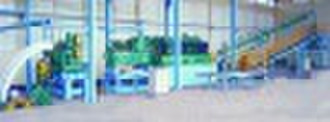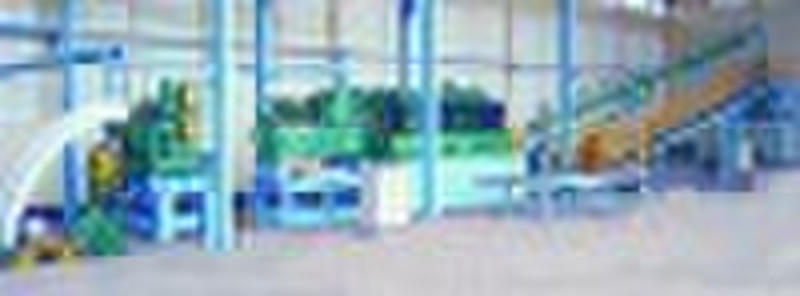Copper scrap Continuous Casting and Rolling Line

Leo Yuan
联系人姓名
基本信息
Composition It is made up of the melting shaft furnace & holding furnace(or reverberatory refining furnace),casting machine, automatic shearer,straightening machine,polishing machine, rolling mill,lubrication system, cooling and de-oxidation unit, rod coiler and electric control system. Features This copper rod continuous casting and rolling line takes copper scraps as the feedstock to produce copper rod in 8mm diameter, with annual capacity varying from 6,000 to 12,000 tons. This casting machine has the following superiorities: 1)Easy to change the steel belt, which can be replaced without the need to hoist away the operation platform; 2)Long life of belt as it can be used for over 6 hours; 3) Easy to change the casting mould as the casting wheel can be dismantled as a whole piece. By turning the moveable guide bridge, its possible to hoist the casting wheel to change it quickly; 4) Optimized in transmission construction without the use of a large toothed ring. Inner gears are used inside for transmission, getting rid of the problem when the casting wheel is blocked by copper dust, which used to occur very often. 5)Easy to clean the copper chips. Good consideration is given I design on the difficulty to clean the copper chips; 6)As the tundish can move up and down, its very easy for it to work and stop at the time of start and stop. Its possible to start or stop casting any time; 7) The tundish is in simple construction, easy to control the flow rate. With two spouts, its able to hold the temperature of copper melt, and possible for the user to fit a thermocouple to display the temperature of the copper melt; 8) Casting is performed in horizontal level, with a 24o angle between the spout and the horizontal line. The casting point is at 12:04 hours, thus greatly reducing turbulent flow of the copper melt in the course of casting, minimizing pinholes and cracks in the bar bar. So quality of the copper rod thus produced is much higher than that from upward casting; 9)Cooling water is fed in nine routes from inner and outer sides to cool the cast bar evenly. Water flow in each route can be adjusted any time. Due to new arrangements of the cooling points on the two sides, the copper melt will not blow, so that operation is more safe; 10)The guide bridge, due to its rational curve, keeps the cast bar stable in upward movement so that the cast bar will not move higher or off the bridge.
交货条款及包装
Packaging Detail: in containers Delivery Detail: 3 months
付款条款
Letter of credit
Telegraphic transfer
-
支付方式
我们接受:









